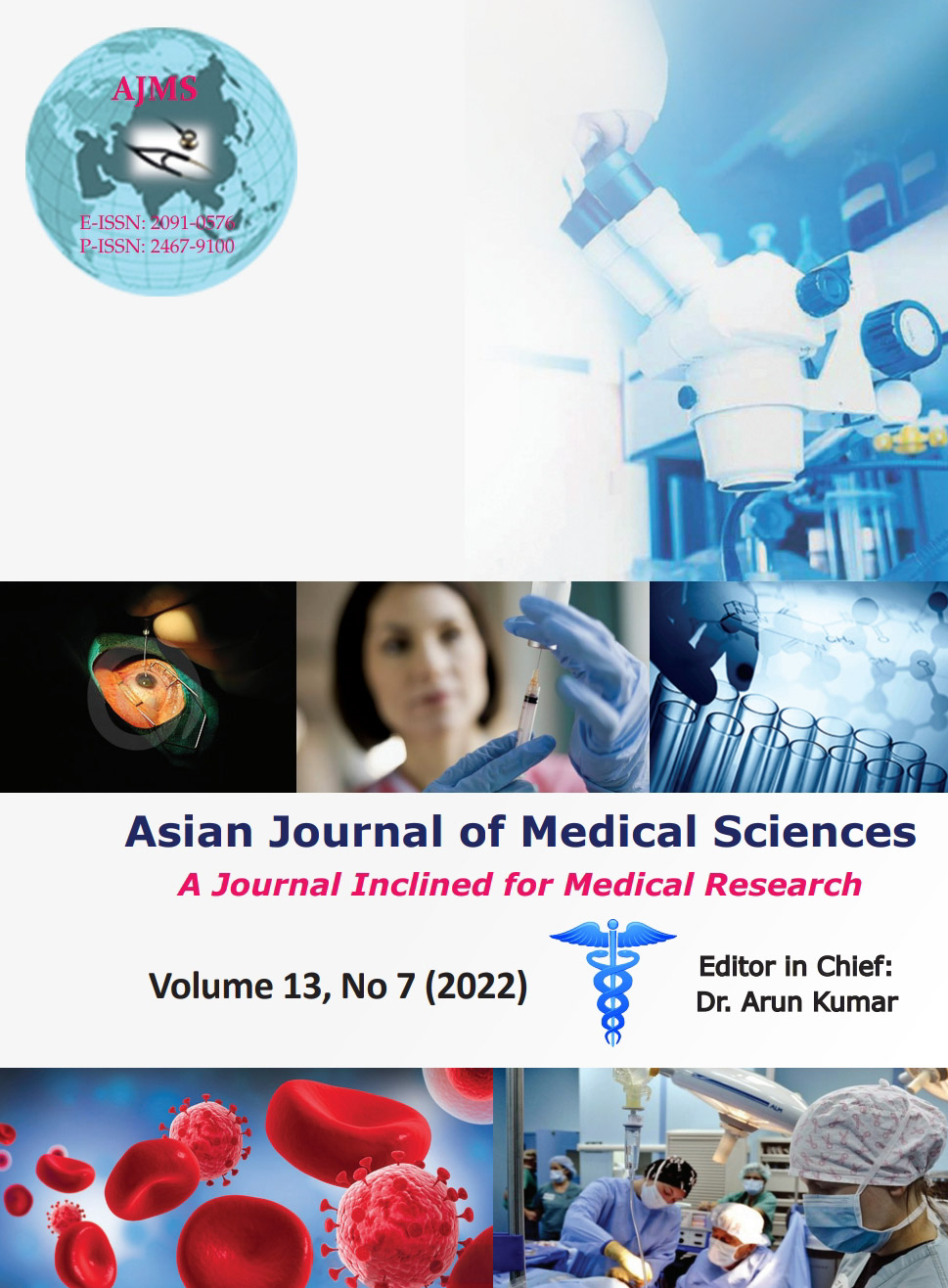Outcome predictors in patients (older than 14 years) with acute febrile encephalopathy: Role of cerebrospinal fluid analysis
Keywords:
Acute febrile encephalopathy, Bacterial meningitis, Cerebrospinal fluid analysis, Mortality, Tuberculous meningitisAbstract
Background: Managing patients with acute febrile encephalopathy (AFE), characterized by fever and altered mental status, is one of the primary reasons for hospitalization and mortality. Understating the predictors of AFE outcome will assist the physician in providing early clues and subsequent inventions to tackle the problem.
Aims and objectives: To evaluate the predictors of outcome in patients with AFE, focusing on the cerebrospinal fluid (CSF) analysis.
Materials and Methods: A prospective observational study was performed on 507 patients with fever and altered mentation (above 14 years of age) in the Department of General Medicine between December 2017 and May 2019. CSF analysis was done to obtain protein, glucose, cell count, and adenosine deaminase (ADA). Computed tomography/magnetic resonance imaging and PS for malaria parasites were also performed.
Results: AFE was more common in males (54.63%). Tuberculous meningitis (TM) (44.8% vs. 41.6%) followed by bacterial meningitis (BM) (25.7% vs. 25%) was the most common diagnosis in females and males respectively. Mortality was more common in TM (57.4%) followed by BM (21.3%) patients. Of the 211 patients with TM, those who died had CSF protein ≥90 (49.7%; P= 0.012), CSF glucose ≥35 (53.2%; P=0.002), CSF cells ≥60 (47%; p=0.012) and ADA ≥15 (31.5%; P<0.001). Of the 127 patients with BM, those who died had CSF protein ≥90 (100%; P<0.001), CSF glucose ≥35 (78.3%; P <0.001) and CFS cells ≥60 (100%; P <0.001).
Conclusion: CSF analysis could be important for predicting the outcome and should be done as soon as possible after the clinical judgment of the AFE.
Downloads
Downloads
Published
How to Cite
Issue
Section
License
Copyright (c) 2022 Asian Journal of Medical Sciences

This work is licensed under a Creative Commons Attribution-NonCommercial 4.0 International License.
Authors who publish with this journal agree to the following terms:
- The journal holds copyright and publishes the work under a Creative Commons CC-BY-NC license that permits use, distribution and reprduction in any medium, provided the original work is properly cited and is not used for commercial purposes. The journal should be recognised as the original publisher of this work.
- Authors are able to enter into separate, additional contractual arrangements for the non-exclusive distribution of the journal's published version of the work (e.g., post it to an institutional repository or publish it in a book), with an acknowledgement of its initial publication in this journal.
- Authors are permitted and encouraged to post their work online (e.g., in institutional repositories or on their website) prior to and during the submission process, as it can lead to productive exchanges, as well as earlier and greater citation of published work (See The Effect of Open Access).




